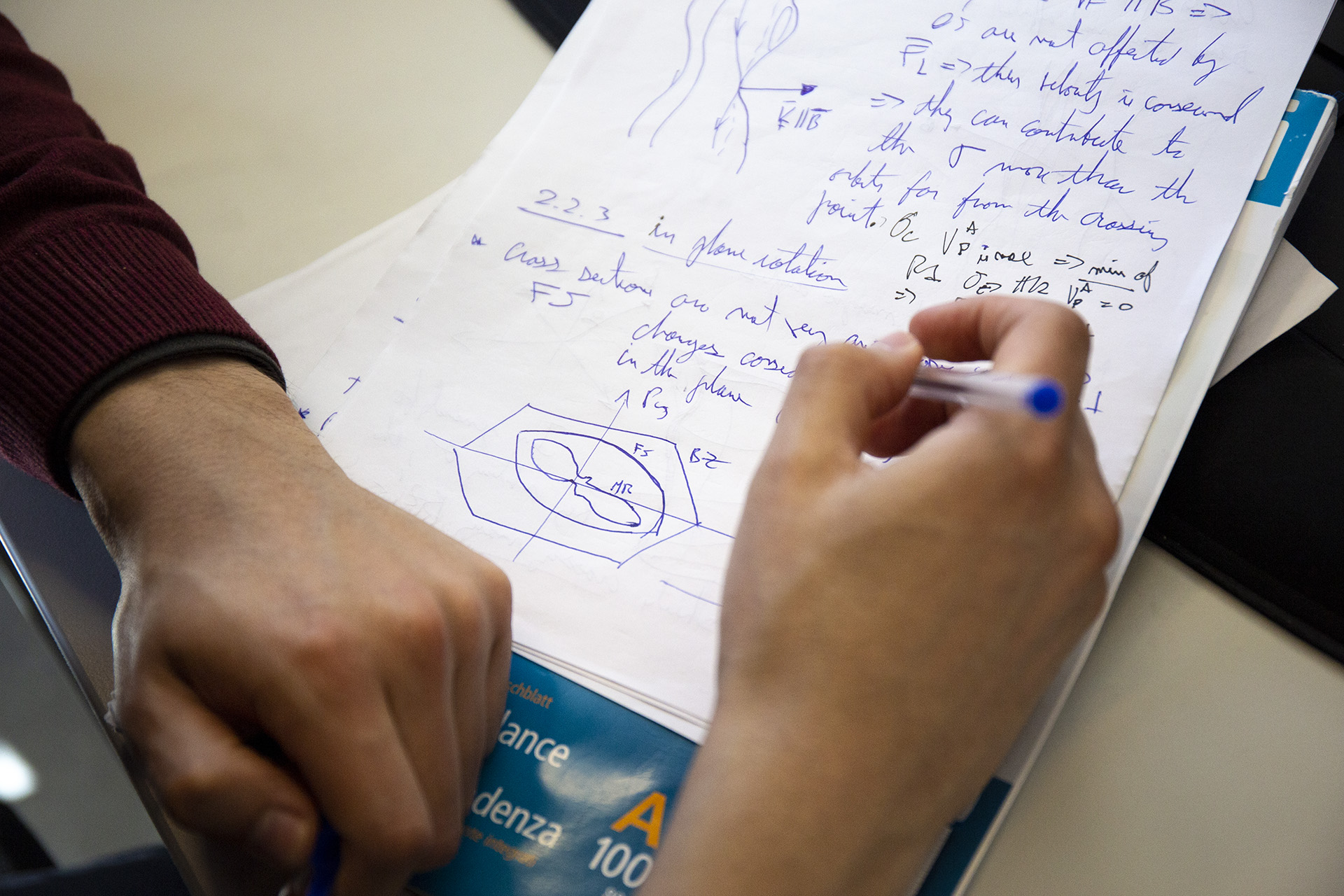
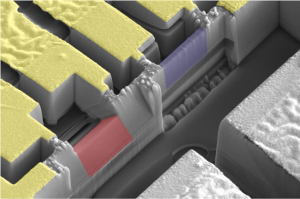
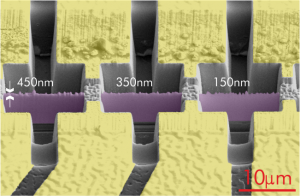
Topological metals
In the recent years, materials with non-trivial band topology have attracted significant interest in the physics community. These materials host band-crossings that are required to appear because of their topological invariants, and are thus stable against disturbances such as strain, defects, etc. which commonly open a gap in such degenerate systems. The low-energy physics of such a band-crossing can be linearized, and thus mapped onto the equations describing massless relativistic fermions, the Dirac (or Weyl) equation. Therefore the quasiparticles in these materials behave similar to elusive mass-less fermions that so-far are unobserved as elementary particles.
The solid does not only emulate the dispersion of these relativistic particles, but also new physics emerges that inherently does not exist in elementary particles: Unlike the boundless universe, the solid has a surface where the medium that hosts this relativistic dispersion terminates. At this surface, the crystal translational symmetry protecting the relativistic dispersion and the conserved quantum numbers such as particle chirality are broken, and new states must appear at the surface. These topologically protected surface states have unique properties such as robusness against defects, which also renders them interesting for electronic applications.
To study these surface states on topological semi-metals in transport experiments, a large surface-to-bulk ratio is essential as one may expect the bulk conductive states to completely mask any signatures of the surface states. To achieve such large surface ratios, we pioneer the fabrication of microstructures of Dirac semi-metals such as Cd3As2 and Weyl semi-metals such as the monoarsenides (e.g. NbAs). We study these materials on the 100nm length scale, which is the length scale of potential industrial applications. At these length scales, the topological surface transport is found to be a sizable contribution to the current flow in these microdevices. In addition, we recently found evidence for quantum coherence developing between the Fermi arc states on opposite surfaces when the device dimension become smaller than the mean free path, which sets the relevant length scale in these materials.
High-Temperature superconductivity
High-temperature superconductivity is one of the most fascinating phenomena arising from strong electronic correlations. At temperatures up to 165K in copper-oxide superconductors, unconventional Cooper pairing resists strong thermal fluctuations and maintains a macroscopic coherent quantum condensate at half of room temperature. The still unsolved case of high-Tc superconductivity has gained significant momentum through recent breakthrough discoveries such as the observation of superconductivity up to 56K in iron-based superconductors, the identification of the Fermi-liquid ground state through quantum oscillations in cuprates as well as the experimental confirmation of charge-density-wave type correlations coexisting with the dome of high-Tc.
Such rich phase diagrams of intertwined orders such as nematic/structural/spin-density in the iron-based materials or the charge-density wave/anti-ferromagnetism/pseudogap that coexist or compete with superconductivity pose natural questions to be addressed by experiments on the micron-scale. These various order parameters exhibit distinct physical length scales, and size-dependent measurements on the sub-micron scale thus provide a pathway to separating these individual phases and study them in single-domain states. In addition, many materials classes such as the LaFeAsO-family of pnictides can thus far only be synthezised in single crystals on the 100 micron scale, which renders even essential basic measurements such as transport anisotropy impossible without the micro-fabrication techniques we advance.
We are also particularly interested in the application potential of these materials for next-generation high-field magnets and lossless power transport. Using our FIB approach, we can establish the important technical parameters such as upper critical field, vortex pinning and critical currents even on micron-sized particles which are typical products of first growth attempts of newly discovered materials. Without the delay in research caused by the need to grow large scale single crystals, we collaborate with materials synthesis experts in the search for those materials with optimal properties for wire fabrication.
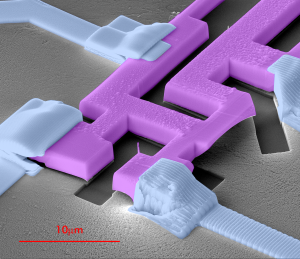
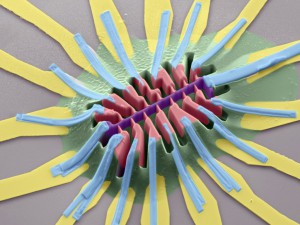
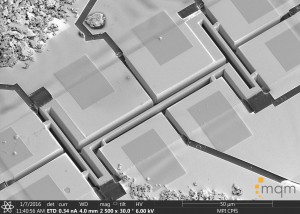
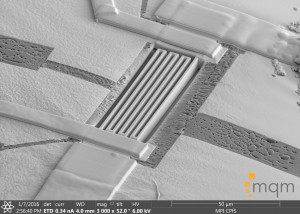
Heavy Fermions
Heavy fermion compounds host a most intriguing electronic liquid. The quasiparticles in these materials acquire enormous effective masses more than hundred times heavier than free electrons. This large mass arises from the hybridization of usually strongly localized f-electrons with the conduction band. Interesting questions about the dichotomy between the itinerant and localized picture of charge can be studied in these compounds. The ground state can commonly be tuned by the application of pressure or by strong magnetic fields, for example inducing Lifshitz-transitions removing the f-electrons from the Fermi surface.
In this materials class, sample microfabrication is essential to perform high precision electric transport experiments. Heavy fermion materials are commonly characterized by extremely small electrical resistance at low temperatures, as the main scattering channels in these very clean materials originates from magnetic scattering which is completely suppressed once the system enters an coherent state involving the f-electrons. Resistivities in the 10-100 nOhm cm range are common, leading to a vanishingly small resistance of macroscopic samples at lowest temperatures.
Here our capability to design single crystal structures of highest quality is a key step forward. We pattern crystals into meander shapes that resemble very long and thin microwires. These wires can be many mm long, while their cross-secion is on the order of square micron. This extreme geometry leads to well measureable resistances in the range of Ohms even for such extremely conductive materials, rendering their resistance well measurable. In addition, we have optimized the contacting procedures to routinely achieve sub-Ohm contact resistances even for square-micron contact areas.
Our research is mainly focused on investigating enigmatic ground states such as the hidden-order state in URu2Si2 or new phases appearing in high magnetic fields such as density waves in Ce-based superconductors such as CeIn3, CeCoIn5 or CeRhIn55 .